Dr. Sultan prides himself on providing premier medical care for jaw reconstruction at his Ft. Lauderdale practice. One of the most challenging tasks for Dr. Sultan as an Oral & Maxillofacial Surgeon is to rebuild the severely deficient upper and lower jaw through several Jaw Reconstruction techniques. This condition can occur from a variety of conditions, including:
- Age
- Removal of cyst/tumor
- Facial injury
- Severe infection
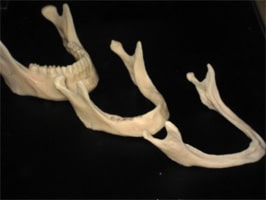
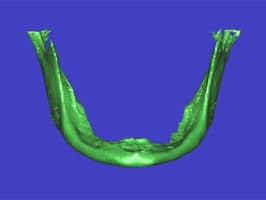
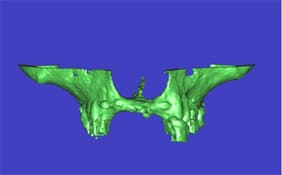
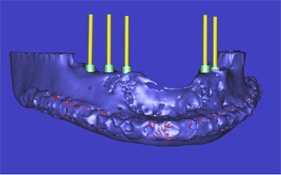
- Loss of bone ultimately affects the position of the soft tissue (skin) and accentuates the appearance of the deformity.
- Dental implants may not be placed until sufficient bone is available.
- Treatment of these unique conditions may involve multiple procedures over an extended period of time.
To learn more about jaw reconstruction and whether you are a candidate for surgery, call 954.771.8772 today and schedule your consultation with Dr. Sultan!

What Causes Bone Loss In the Jaw?
Our jawbone, like the other bones in our bodies, needs certain stimulation to keep building new bone mass. In our legs, for instance, applying weight either by walking or other exercise helps the bones to stay healthy. In our jawbone, the teeth provide this stimulation. When we bite and chew, a tremendous amount of bite force energy is created. This energy transfers down into the teeth, into the tooth roots, and then into the jawbone. This energy triggers the jawbone to continually create new bone cells, replace old cells; this process keeps the jawbone healthy.
When the jaw doesn’t receive this stimulation it begins to deteriorate and lose mass, a process known as resorption. Not replacing missing teeth and wearing dentures are the main causes for jawbone deterioration, but there are a few other causes, as well.
- Missing Teeth – When a tooth is extracted or knocked out and isn’t replaced by a dental implant, the jawbone immediately loses the stimulation referred to above in the area of the missing tooth or teeth. The bone loss is greatest over the first 18 months after the tooth was extracted, but it continues through life.
- Bridges – For the same reason, bridges allow for bone loss. While the missing teeth covered with a bridge look good aesthetically, the jawbone under those missing teeth receives no stimulation and begins to deteriorate.
- Dentures – Full dentures sit directly on the gums and don’t stimulate the jawbone beneath. Dentures resting on the gingiva (the gums), as opposed to implant-supported dentures, actually accelerate bone loss. That’s why dentures need to be remade every few years because the bone loss that is occurring keeps changing the fit.
- Periodontitis – The bacteria in gum disease first affects the gum tissue that wraps around the teeth. As the bacteria attack the gums, the gums separate from the teeth and pockets form. Now the gum disease will attack the bone that holds the teeth in place, loosening the teeth and beginning a progression of bone loss.
- Osteomyelitis – Osteomyelitis is a type of bacterial infection in the bone and bone marrow of the jaw. This infection causes inflammation, which can create a reduction in blood supply and damage to the bone.
- Tumors – Removal of tumors has to include additional jaw bone mass surrounding the growth.
- Sinus deficiencies – If a molar in the upper jaw is removed, air pressure from the air cavity in the maxillary sinus causes resorption of the bone that formerly held the teeth in place. The sinuses become enlarged. This can lead to insufficient bone mass in the upper jaw to place an implant.
- Bite Misalignment – If your bite is improperly aligned, certain teeth may not have the proper balance between the upper and lower teeth. This can create areas that aren’t receiving stimulation down into the jaw, leading to deterioration of the jaw.
Reconstruction Treatment of the Severely Resorbed Jaw
Advanced bone loss of the upper and lower jaws require special techniques for reconstruction. Advanced bone loss leads to facial changes such as a sunken-in appearance of the lower lip, a thinning of the lips, an increase in the number and depth of wrinkles about the mouth and sagging of the chin. They normally involve a combination of extensive bone grafting and implant placement to achieve a stable foundation for tooth replacement.
Special reconstructive techniques, normally using a combination of extensive bone grafting in combination with implant placement is successful. A combination of bone grafting, to rebuild bone volume, and dental implant placement is necessary to not only provide support of the dentition, but also reconstruct the soft tissues that reduce the appearance of facial aging.
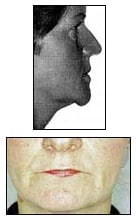
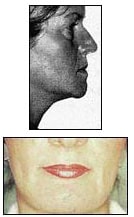
Custom Designed Implants For Bone Replacement
Using Computer Guided Surgery implants for bone replacement surgery can be designed to accurately replace lost tissue. Implants can be made from metal (TMJ replacement) or porous plastic (volume/contour replacement).
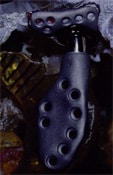
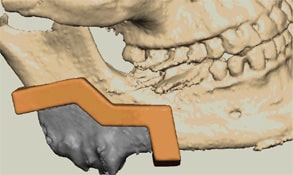
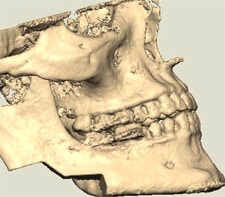
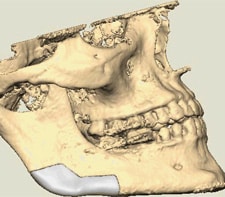
replacement implant
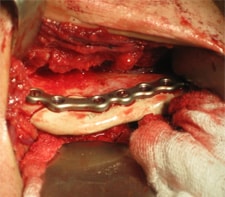
Insertion of implant into jaw
Dr. Sultan is at the forefront of this cutting edge technology and is one of the few surgeons in Ft. Lauderdale and the greater south Florida area to offer these jaw reconstruction techniques to the community.
What Are The Benefits of Jaw Reconstruction?
There are a variety of benefits to having your jaw rebuilt with Dr. Sultan. First, the grafting will create a platform that can accept dental implants. If you’ve lost all of your teeth, you’ll be able to shed the traditional dentures and switch instead to implant-supported dentures. These are very secure and you can confidently eat and talk without fear of slipping.
Your rebuilt bone mass will also rebuild your jaw profile, replacing the sunken, retreating look that was only accelerating with time. Your lips will become thicker, as they formerly were, and you’ll lose many of the wrinkles and creases that had formed due to your sagging mouth and retreating chin. Your whole lower face will look younger and far less sunken.
How Long is the Surgery?
Bone grafting with Dr. Sultan should take approximately one hour, but this depends on the amount of grafting you require. It may take longer. Dr. Sultan will discuss this with you during your consultation.
What is Recovery Like After Jaw Reconstruction?

Considering bone grafting is an involved surgical procedure, you will have some pain for the first couple of days after your bone grafting procedure, but this won’t be sharp pain. The jaw doesn’t have nerves, but you will have some soreness from the procedure. Generally taking 600 mg of ibuprofen is sufficient for most people to handle the soreness. You will have some swelling. Avoid smiling or stretching the swollen tissue, as this can stretch the sutures on your surgical site. You may have a periodontal pack placed over the surgical site. The pack is pink and impregnated with antibiotic. It is there to protect the surgical site from infection and any washout of the particulate bone utilized to restore your jaw.
By the third day, you should feel much better. There will be some swelling, but it will also be diminishing. You’ll have to be sure not to disturb the delicate gum tissue surrounding your graft. No astringent mouthwashes can be used. You can brush, but not at the site of your periodontal pack. You’ll need to eat a soft diet for a couple of weeks.
The bone graft will have to take and then begin creating new, strong bone. This takes several months. If Dr. Sultan was able to combine bone grafting with implant placement at the same time, then you’ll still need a few months before you can move on to the next steps in the process of rebuilding your jaw. More likely, implants will be placed after your jaw has developed sufficient new bone mass to support them.
What Our Patients Are Saying:
"Dr. Sultan is a very caring surgeon. He listens and takes his time with you to explain any concerns and puts you at ease. I would recommend him always. He removed a tumor from my daughters' jaw and made sure she was well taken care of. He personally called every day to check on her and even was kind enough to meet us at his office over the weekend, when it was closed, to take a look at her. He and his staff have been such a blessing." -Danny V.
Schedule Your Jaw Reconstruction Consult In Fort Lauderdale, FL!
Contact us today to learn more about jaw reconstruction where Dr. Sultan is proud to serve patients from Fort Lauderdale, Pompano Beach, Boca Raton, Hollywood, and the surrounding areas. Dial 954.771.8772 today to reach our office, or fill out the form in our contact page by clicking here.

